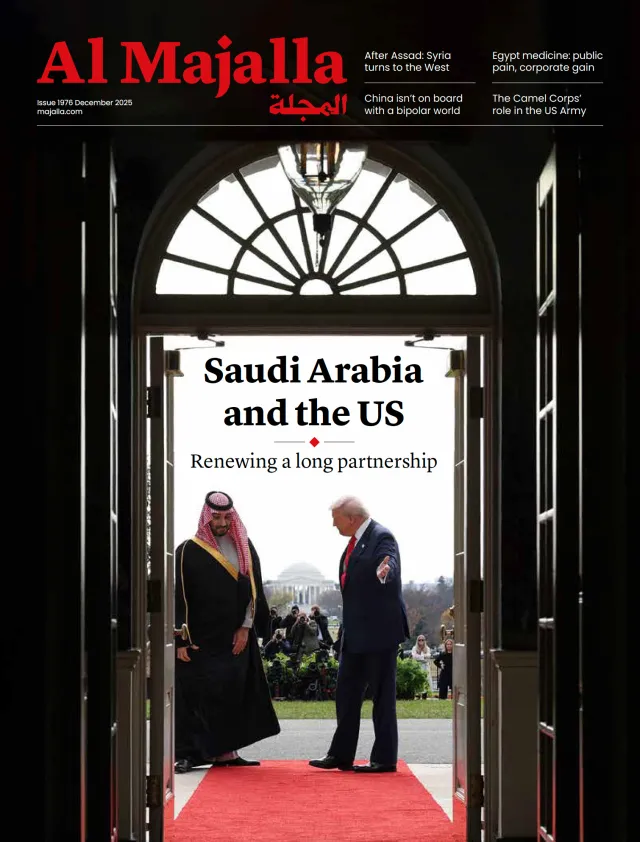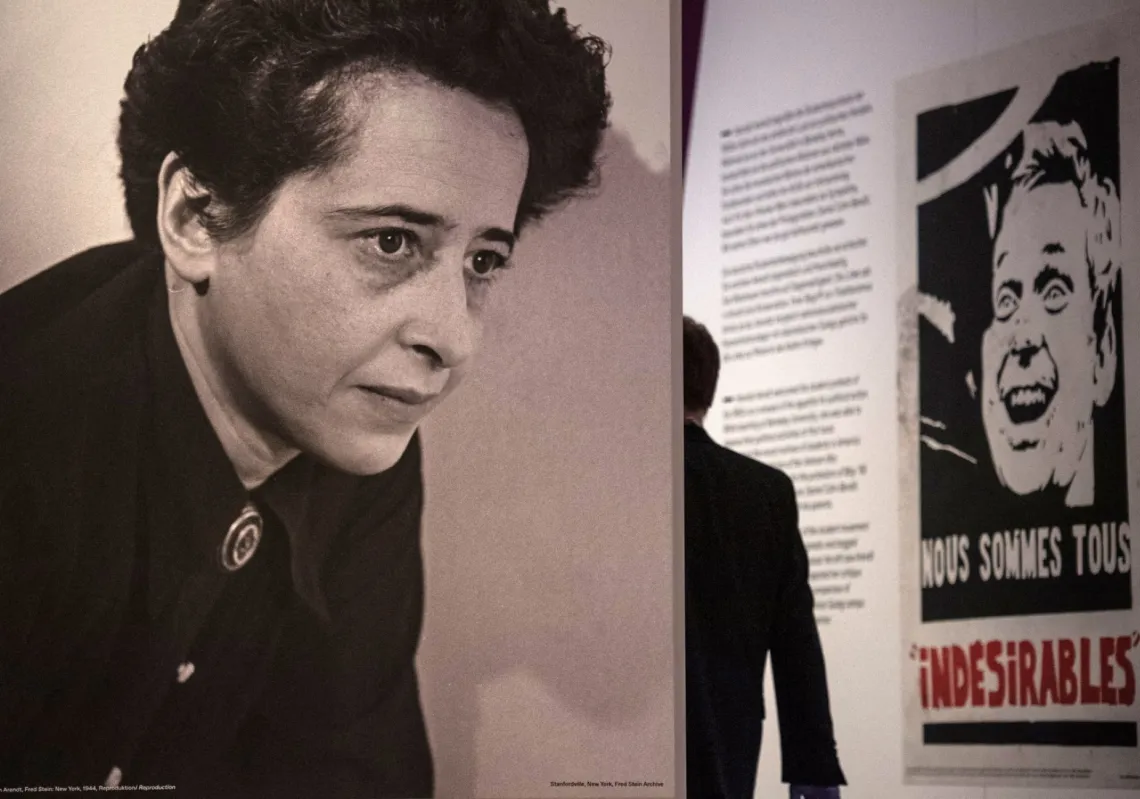The Arab world has a vibrant and rich literary scene. Al Majalla picks out some choice titles in our fortnightly round-up of the latest Arabic books, which aims to highlight some trends and thinking in the Arab world.

The Translator’s Task
Author: Walter Benjamin
Translator: Prof. Dr. Ahmed Bouhassen
Reviewed by: Dr. Radwa Al-Dari
Publisher: Al-Zubair Foundation – Now / Publishers and Distributors – Jordan
This is an Arabic translation of the seminal 1921 essay by the German philosopher, critic, and historian Walter Benjamin. The original work has reverberated through decades of academic discourse. Frequently translated into multiple languages, it is widely regarded as a foundational text in the field of translation studies, if not the single most significant.
Benjamin defines the translator’s task as the pursuit of a unique intended effect within the target language, one that resonates with the spirit of the original. It is this principle, he contends, that fundamentally distinguishes translation from poetry.
While the poet is not primarily concerned with language itself but with the specificity of context and expression, the translator approaches language from the outside. The poet’s intention is spontaneous, original, and self-evident, whereas the translator’s aim is inferential, culminating, and laden with meaning.
According to Benjamin, the essence of translation lies in the aspiration to integrate multiple languages into one "true" language—a language that transcends mere communication of sentences, literary texts, or critical reflections.
These elements, while individually coherent outside of translation, become unified and harmonised within it. If there exists a language of truth—silent, devoid of tension, and the bearer of ultimate mysteries—it is revealed most clearly through translation, embodying the descriptive and predictive power that philosophy seeks.
Benjamin further asserts that translation is far from devoid of artistic depth, as some impassioned artists might argue. Rather, it is suffused with philosophical creativity, driven by the pursuit of a language in which translation fully reveals itself.
Bouhassen’s Arabic translation is grounded in the original German text, as well as its English and French versions. His multilingual approach underscores the essay’s significance, complexity, and meticulousness.

The Pit of Sorrow – Syria in the Time of Assad
Author: Mohammad Amir Nashir Al-Ne’am
Publisher: Maysaloon for Printing and Publishing – Türkiye
These are the memoirs of Syrian writer Mohammad Amir Nashir Al-Ne’am, offering a stark reflection on one of the darkest chapters in Syria’s modern history. It spans the period from Hafez al-Assad’s violent seizure of power in 1970—via what he termed the “Corrective Movement”—to the eruption of the Syrian revolution in 2011, a popular uprising against decades of authoritarian rule that persisted under his son, Bashar al-Assad.
Through his personal story, the author documents the systematic killing and forced displacement of Syrians, culminating in his own harrowing escape—an ordeal that encapsulates the broader Syrian exodus.
The term used in the title is a Syrian idiom, describing a country turned into a suffocating hole, thick with despair, grief, and hopelessness. As the book explains: “The seasoned elder inhabitants of Aleppo once called their city ‘Jurat al-Hamm’—a pit of sorrow. They coined other phrases too: ‘Jurat Habtazza,’ referring to a tinker who twists back and forth but never moves forward; or ‘the sewage pit,’ where household waste and sewage collect."
“After the Ba’ath Party seized power in 1963, the pit widened, engulfing other cities. Under the Assads—father and son—it grew monstrously, until Syria in its entirety was consumed.”
From early childhood, the author recounts how the Assad regime indoctrinated young minds, transforming schoolchildren into miniature soldiers. At the primary level, they were conscripted into the Baath Vanguard, an organisation with a uniform enforced on children.
With each educational stage came a new layer of militarisation: in middle school, they joined the “Futuwa” (Youth Fighters), donned military uniform, and studied a new subject “, military education,” introduced to students as young as 12.
Among the book’s most gripping passages is the author’s account of his family’s desperate flight from Syria. After numerous failed attempts, he finally escaped—but only after his son was shot four times: "For three days now, I’ve been playing the role of a steadfast military commander retreating with his battalion to spare them certain death. We (my family and I) passed through army, security, and militia checkpoints between Aleppo and Latakia as though traversing enemy trenches, weighed down with fatigue, resolve, defiance, and sheer recklessness. I’ve rehearsed this mission countless times in recent months.”
He recalls one such failed attempt: “We were harvesting olives in Ariha when gunfire erupted from several soldiers. Perhaps it was sport for them. Perhaps they were under orders to kill a family every week, right in the middle of their land. I gave firm instructions: ‘Children, run for the car and take cover behind the wheels. Hanaa, hide with Abdulrahman behind that tree.’ When Ali was hit by four bullets under the car, I ordered a full retreat: scatter, flee in all directions, and head to the far end of our land."
“Bullets chased us like a vicious hunting dog—then circled us like a docile lapdog sniffing its prey without biting. The ground was wet from recent rain, so the bullets raised no dust, only soft sprays of damp earth. Some struck the olive trees, sending splinters past my chest. But we made it out, thanks to the hilly terrain that shielded us from the soldiers’ eyes. We were able to get our boy to a medical post in the village of M’atram.”
This memoir distils Syria’s ordeal under the Assads into a deeply personal yet universally resonant narrative. It is a chronicle of fear, flight, and survival that mirrors the journey of countless Syrians, each confronting death in their own way.

The Scandal of the Century – Selected Journalism by García Márquez (1950–1984)
Translator: Amal Fares
Publisher: Dar Al-Tanweer – Lebanon
This volume collects nearly 50 journalistic pieces written by the celebrated Colombian novelist Gabriel García Márquez between 1950 and 1984.
The pages recount real events with the same narrative flair and intensity that characterise his fiction. One piece details the tragic death of a young Italian girl, a story he would later transform into the novella Of Love and Other Demons. Others explore the history of the transatlantic slave trade in Latin America and France, the rise of Fidel Castro and the Cuban Revolution, and the fervour surrounding Latin American guerrilla movements.
Márquez also revisits familiar figures and places from his fictional universe. Most notable among them is the Buendía family, doomed or perhaps self-damned to a century of solitude, and the town of Aracataca, both immortalised in One Hundred Years of Solitude—the novel that earned him the Nobel Prize in Literature. Alongside these, he reflects on the authors who influenced his literary path.
As in his fiction, Márquez’s journalism is defined by a signature blend of fact and imagination, a hallmark of the style dubbed “magical realism,” a term equally applicable to his fiction and his reporting.
Despite global recognition for his fiction, Márquez always insisted that journalism was his true calling. He once remarked: “I don’t want to be remembered for One Hundred Years of Solitude, nor the Nobel Prize. I want to be remembered for the newspaper... I was born a journalist, and today I feel more like a reporter than ever. It’s in my blood; it draws me in ... My books are journalistic books, even if that often goes unnoticed.”
Several of his novels began as news items, which he later expanded into fully realised narratives. The volume also includes critical reflections on Márquez as a journalist. Juan Cruz writes: “Gabo was a great journalist; he was the Pablo Picasso of 20th-century literature.”
Newsweek adds: “Márquez holds a special place in the hearts of journalists, alongside Dickens, Twain, and Hemingway... He refined the literary pillar of the 20th century.”
And The Guardian observes: “Márquez learned the craft of storytelling from journalism and proved himself a master of structure, rhythm, and mimicry.”

Naguib Mahfouz – On Writing
Author: Amr Fathi
Publisher: Dar El Karma for Publishing and Distribution – Egypt
This volume is a rare and intimate window into the mind of the Arab world’s most celebrated literary figure and Nobel laureate. It brings together Mahfouz’s reflections on the craft of writing, including his techniques, routines, and thoughts on the perennial tension within the Arabic novel between classical and colloquial language.
More than a simple compilation of quotes or interviews, the book reads like a writer’s memoir in Mahfouz’s own voice. It brings readers closer to the origins of his stories and characters, forging a direct, almost conversational, connection with his body of work.
Mahfouz identifies the Qur’an as his earliest literary influence: “My first understanding of the concept of story came from the Qur’anic narratives. As I read them, I was captivated by their refined storytelling form. Qur’anic stories are among the finest examples of narrative art, crafted with precision and beauty."
“They do not unfold like the traditional 19th-century novel—with a beginning, a rise in tension, complications, and resolution. Instead, they resemble 20th-century experimental fiction, where narrative structure is driven by dramatic necessity, inserting different parts of the story where they belong emotionally or thematically. It was, in a sense, a revolution in modern narrative art.”
He likens himself to the hakawati; the traditional folklorist who once entertained audiences in cafés across the Arab world.
“I am a storyteller, like the man who used to sit in the coffeehouse and begin with, ‘Let us first bless the Prophet,’ before launching into his tale. That man’s task was to mould the grandeur of language into the art of storytelling.”
Famed for his evocative portrayals of Cairo’s alleyways and traditional quarters, Mahfouz reflects that his fiction has such a strong sense of place: “I was born in Cairo, in its ancient neighbourhoods, and I fell in love with them. I believe that writing is, at its core, a kind of love—for a place, or an ideal. Those old districts became everything to me. I feel like a man married to one woman, and so it is only natural that all my stories take place in these same spaces. I’m at my best when writing about the alleyway. That’s why I made it a symbol of the entire world, modifying it as I pleased.”
This book is Mahfouz on Mahfouz—an insightful and deeply personal account of his creative universe, told in his own words.

The Saudi Woman and Active Citizenship – Reflections on Societal Transformations
Author: Alia Al-Farid
Publisher: Arab Diffusion Foundation – Lebanon
This exploration of the shifting social, cultural, and political landscape surrounding Saudi women covers both the progress that has been made and the challenges ahead. It also calls for women to have louder voices in public life and more inclusion in the country’s national dialogue.
Al-Farid looks at the Saudi labour market and the growing need to bring more women into the workforce, while highlighting crucial role women play in volunteer work, from aiding the poor and supporting widows and orphans, to organising religious and cultural events and delivering community education in fields such as health, religion, and family life. She details women who have founded cultural libraries, produced magazines and held exhibitions to showcase traditional crafts and skills, showing how much the Saudi woman has evolved.
Al-Farid doesn't shy away from darker topics. She addresses domestic violence, its root causes and consequences, as well as violence against children, as well as the rights of people with special needs, topics that resonate with a wider audience.
She describes the book as “a continuation of earlier efforts to promote and support social engagement and cultural advancement in accordance with national priorities" and says the book aims to "gather these pieces as a record of the different phases and transitions that may benefit today’s generation and those to come.”
In the book's forward, Dr. Abdul Hussein Shaban commends Al-Farid for embracing positive societal change while also offering pragmatic proposals grounded in legal insight. He agrees with her in that intellectuals can play a constructive role in aiding the nation in its social aspirations. When built on mutual trust, he argues, such a relationship enables both policymakers and thinkers to contribute effectively to national development, monitoring progress, expanding its scope, and countering malicious agendas aimed at undermining national values.











